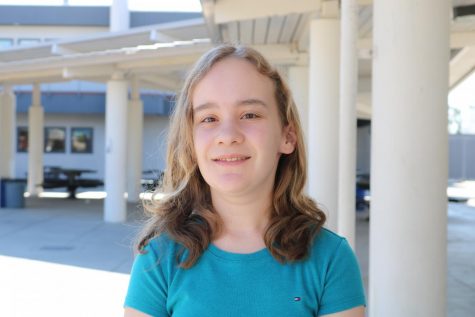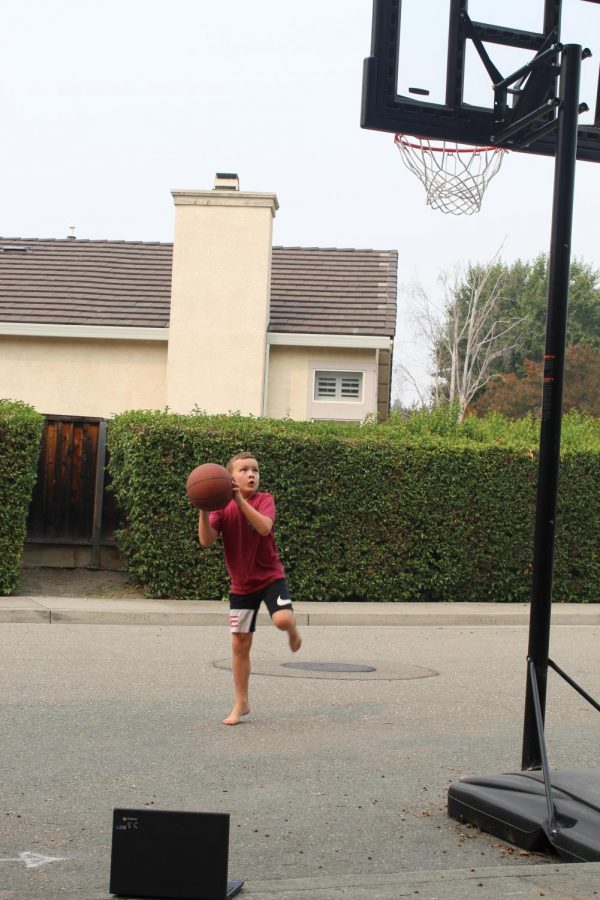How exactly do I run a mile inside my house?
P.E. students and staff are adapting to physical education through a screen
Remember when PE was interactive and with other students? Now during remote learning, elementary school students like Maxwell Gerbracht get to shoot hoops by themselves while their teachers watch through a computer screen. High schoolers watch video workouts through the PLT4M fitness app and perform exercises.
PE is looking quite different this year with all courses being online.
The switch to virtual PE became official in July after the San Ramon Valley Unified School District Board of Education voted how PE should look during remote learning, assistant principal Jeffrey Osborn said.
With safety in mind to create an online PE course for Cal High and the district’s three other high schools, the district adopted PLT4M to be used by all high school physical education staff and students.
PLT4M, pronounced “platform”, is a video-based fitness app that allows students to watch workout videos and complete their own exercises. Now instead of running a mile or playing basketball during PE classes, students work on their PLT4M exercises from the comfort of their homes. While completing their exercises, students have the opportunity to get help from their teachers who are eagerly waiting on the other side of the screen to assist.
“What I like about PE being online is the fact about [sic] not having to get dressed up for PE [and] being able to have the comfort of your own home,” freshman Adi Balaji said.
Freshman PE teacher Joe Sussman said the first 30 to 40 minutes of his class are spent explaining the different workouts students need to complete for that day, while the rest of the class time is allotted for troubleshooting and free time for the students to begin their exercises.
PE teachers were not able to change anything about the course itself since it was approved by the board, something that concerned Osborn.
“It’s a challenging year with the fact that students do not have the access to actual outdoor activities,” Osborn said.
Osborn was worried how everything would work online and if the staff and students would be able to make what is generally a physically active class like PE work in a virtual setting. He wasn’t alone.
PE teacher Sheridan Kautzman had initial concerns about how virtual PE would work as well.
“How can we provide a structured non-aggressive class because of the new change and environmental effects it would have on the individual students?” Kautzman asked.
Kautzman finds it tough because nothing is in person and there’s not a lot of movement involved. But about two months into the school year, PE is running more smoothly after some early confusion for students who thought they were enrolled in the wrong class because PE was renamed Cross Fitness.
Freshman Eva Novikov didn’t know about the name change, but she said she liked the idea of doing PE from home, especially with the given equipment in her household.
“We use Google Meet, but I wish it was in Zoom because there are breakout rooms,” Novikov said.
Novikov liked the overall setup of the physical education program, especially with the app “PLT4M” since it contains everything students need and the course is quite easy to understand.
Freshman P.E. teacher Lenard Matthews said he acted more on a personal level of being hands on with the students by creating private rooms to help students one-on-one and being open to any questions. Matthews said he likes being able to interact one on one with students to better understand what they need help with.
PLT4M allows teachers to know who logged in and out of the app because the video report explains which students actually participated in what was assigned to them.
If it is utilized the correct way and students are able to understand the exercises assigned.
But students aren’t required to do exercises in front of their computer screens for teachers to observe, so they’re on the honor system to complete their workouts.
“[Teachers] don’t know if the students just sat there and allowed the time to run,” Matthews said.
Students have mixed feelings about virtual physical education.
Balaji believed the class wouldn’t be as engaging toward the start of the year compared to traditional PE, but now he feels that it is more work and more boring.
“It feels tedious because you have to do it online,” Balaji said. “It’s boring because you can’t do it with anyone else.”
But students see some benefits to taking P.E. online. Some of the benefits have been that students can collaborate on workout goals. The course also provides one-on-one work with the teacher, so it seems like a personal trainer at home, unlike at a public or school gym.
“We all have a program that teaches PE online while using the same program that we would use if we were in school,” Matthews said.
Editor Nick Harvey contributed to this story.

Jaida Baker is a senior at California High School in San Ramon, very excited to be working in newspaper again this year. In her free time, she loves to...





